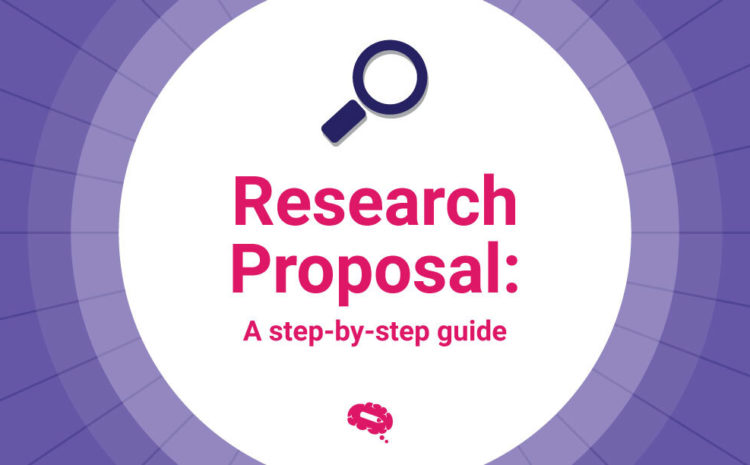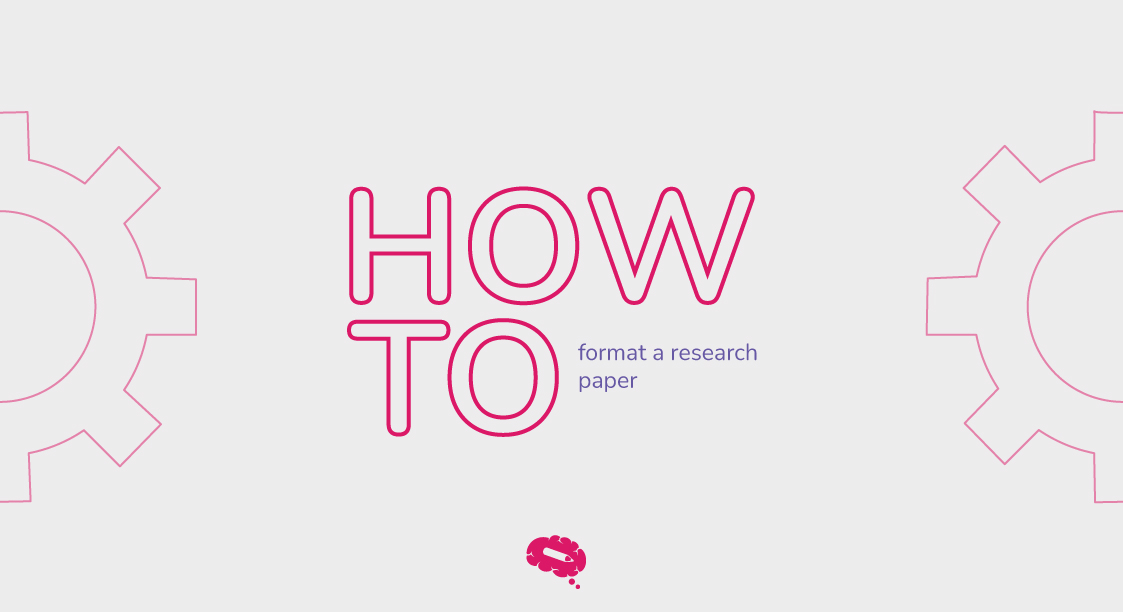There’s no doubt you have the most cutting-edge research idea to date, backed up by a solid methodology and a credible explanation proving its relevance! There are thousands of research ideas that could change the world with many new ideologies.
The truth is, none of this would matter without support. It can be daunting, challenging, and uncertain to secure funding for a research project. Even more so when it isn’t well-thought-out, outlined, and includes every detail.
An effective solution for presenting your project, or requesting funding, is to provide a research proposal to potential investors or financiers on your behalf.
It’s crucial to understand that making sure your proposal is perfect will drastically improve your chances of landing a successful research position. Your research proposal could result in the failure to study the research problem entirely if it is inadequately constructed or incomplete.
It is for this reason that we have created an excellent guide that covers everything you need to know about writing a research proposal, and includes helpful tips for presenting your proposal professionally and improving its likelihood of acceptance!
What Is a Research Proposal?
Generally, a research proposal is a well-crafted, formal document that provides a thorough explanation of what you plan to investigate. This includes a rationale for why it is worth investigating, as well as a method for investigating it.
Research proposal writing in the contemporary academic environment is a challenging undertaking given the constant shift in research methodology and a commitment to incorporating scientific breakthroughs.
An outline of the plan or roadmap for the study is the proposal, and once the proposal is complete, everything should be smooth sailing. It is still common for post-graduate evaluation panels and funding applications to submit substandard proposals.
By its very nature, the research proposal serves as a tool for convincing the supervisor, committee, or university that the proposed research fits within the scope of the program and is feasible when considering the time and resources available.
A research proposal should convince the person who is going to sanction your research, or put another way, you need to persuade them that your research idea is the best.
Obviously, if it does not convince them that it is reasonable and adequate, you will need to revise and submit it again. As a result, you will lose significant time, causing your research to be delayed or cut short, which is not good.

A good research proposal should have the following structure
A dissertation or thesis research proposal may take on a variety of forms depending on the university, but most generally a research proposal will include the following elements:
- Titles or title pages that give a description of the research
- Detailed explanation of the proposed research and its background
- Outline of the research project
- An overview of key research studies in the field
- Description the proposed research design (approach)
So, if you include all these elements, you will have a general outline. Let’s take a closer look at how to write them and what to include in each element so that the research proposal is as robust as the idea itself.
A step-by-step guide to writing a research proposal
#1 Introduction
Researchers who wish to obtain grant funding for a project often write a proposal when seeking funding for a research-based postgraduate degree program, or in order to obtain approval for completing a thesis or PhD. Even though this is only a brief introduction, we should be considering it the beginning of an insightful discussion about the significance of a topic that deserves attention.
Your readers should understand what you are trying to accomplish after they read your introduction. Additionally, they should be able to perceive your zeal for the subject matter and a genuine interest in the possible outcome of the research.
As your introduction, consider answering these questions in three to four paragraphs:
- In what way does the study address its primary issue?
- Does that subject matter fall under the domain of that field of study?
- In order to investigate that problem, what method should be used?
- What is the importance of this study?
- How does it impact academia and society overall?
- What are the potential implications of the proposed research for someone reviewing the proposal?
It is not necessary to include an abstract or summary for the introduction to most academic departments and funding sources. Nevertheless, you should confirm your institution’s requirements.
#2 Background and importance
An explanation of the rationale for a research proposal and its significance is provided in this section. It is preferable to separate this part from the introduction so that the narrative flows seamlessly.
This section should be approached by presuming readers are time-pressed but want a general overview of the whole study and the research question.
Please keep in mind that this isn’t an exhaustive essay that contains every detail of your proposed research, rather a concise document that will spark interest in your proposal.
While you should try to take into account the following factors when framing the significance of your proposed study, there are no rigid rules.
- Provide a detailed explanation of the purpose and problem of the study. Multidimensional or interdisciplinary research problems often require this.
- Outline the purpose of your proposed research and describe the advantages of carrying out the study.
- Outline the major issues or problems to be discussed. These might come in the form of questions or comments.
- Be sure to highlight how your research contributes to existing theories that relate to the problem of the study.
- Describe how your study will be conducted, including the source of data and the method of analysis.
- To provide a sense of direction for your study, define the scope of your proposal.
- Defining key concepts or terms, if necessary, is recommended.
The steps to a perfect research proposal all get more specific as we move forward to enhance the concept of the research. In this case, it will become important to make sure that your supervisor or your funder has a clear understanding of every aspect of your research study.
#3 Reviewing prior literature and studies
The aim of this paragraph is to establish the context and significance of your study, including a review of the current literature pertinent to it.
This part aims to properly situate your proposed study within the bigger scheme of things of what is being investigated, while, at the same time, showing the innovation and originality of your proposed work.
When writing a literature review, it is imperative that your format is effective because it often contains extensive information that allows you to demonstrate your main research claims compared to other scholars.
Separating the literature according to major categories or conceptual frameworks is an excellent way to do this. This is a more effective method than listing each study one by one in chronological order.
In order to arrange the review of existing relevant studies in an efficient manner, a literature review is often written using the following five criteria:
- Be sure to cite your previous studies to ensure the focus remains on the research question. For more information, please refer to our guide on how to write a research paper.
- Study the literature’s methods, results, hypotheses, and conclusions. Recognize the authors’ differing perspectives.
- Compare and contrast the various themes, arguments, methodologies, and perspectives discussed in the literature. Explain the most prominent points of disagreement.
- Evaluate the literature. Identify persuasive arguments offered by scholars. Choose the most reliable, valid, and suitable methodologies.
- Consider how the literature relates to your area of research and your topic. Examine whether your proposal for investigation reflects existing literature, deviates from existing literature, synthesizes or adds to it in some way.
#4 Research questions and objectives
The next step is to develop your research objectives once you have determined your research focus.
When your readers read your proposal, what do you want them to learn? Try to write your objectives in one sentence, if you can. Put time and thought into framing them properly.
By setting an objective for your research, you’ll stay on track and avoid getting sidetracked.
Any study proposal should address the following questions irrespective of the topic or problem:
- What are you hoping to accomplish from the study? When describing the study topic and your research question, be concise and to the point.
- What is the purpose of the research? A compelling argument must also be offered to support your choice of topic.
- What research methods will you use? It is essential to outline a clear, logical strategy for completing your study and make sure that it is doable.
Some authors include this section in the introduction, where it is generally placed at the end of the section.
#5 Research Design and Methods
It is important to write this part correctly and organize logically even though you are not starting the research yet. This must leave readers with a sense of assurance that the topic is worthwhile.
To achieve this, you must convince your reader that your research design and procedures will adequately address the study’s problems. Additionally, it seeks to ensure that the employed methods are capable of interpreting the likely study results efficiently.
You should design your research in a way that is directly related to your objectives.
Exemplifying your study design using examples from your literature review, you are setting up your study design effectively. You should follow other researchers’ good practices.
Pay attention to the methods you will use to collect data, the analyses you will perform, as well as your methods of measuring the validity of your results.
If you describe the methods you will use, make sure you include the following points:
- Develop a plan for conducting your research, as well as how you intend to interpret the findings based on the study’s objectives.
- When describing your objectives with the selected techniques, it is important to also elaborate on your plans.
- This section does not only present a list of events. Once you have chosen the strategy, make sure to explain why it is a good way to analyse your study question. Provide clear explanations.
- Last but not least, plan ahead to overcome any challenges you might encounter during the implementation of your research design.
In the event that you closely follow the best practices outlined in relevant studies as well as justify your selection, you will be prepared to address any questions or concerns you may encounter.
We have an amazing article that will give you everything you need to know about research design.
#6 Knowledge Contribution and Relevance
In this section, you describe your theory about how your study will contribute to, expand, or alter knowledge about the topic of your study.
You should discuss the implications of your research on future studies, applications, concepts, decisions, and procedures. It is common to address the study findings from a conceptual, analytical, or scientific perspective.
If you are framing your proposal of research, these guide questions may help you:
- How could the results be interpreted in the context of contesting the premises of the study?
- Could the expected study results lead to proposals for further research?
- Is your proposed research going to benefit people in any way?
- Is the outcome going to affect individuals in their work setting?
- In what ways will the suggested study impact or enhance the quality of life?
- Are the study’s results going to have an impact on intervention forms, techniques, or policies?
- What potential commercial, societal, or other benefits could be derived from the outcomes?
- Policy decisions will be influenced by the outcomes?
- Upon implementation, could they bring about new insights or breakthroughs?
Throughout this section, you will identify unsolved questions or research gaps in the existing literature. If the study is conducted as proposed, it is important to indicate how the research will be instrumental in understanding the nature of the research problem.
#7 Adherence to the Ethical Principles
In terms of scientific writing style, no particular style is generally acknowledged as more or less effective. The purpose is simply to provide relevant content that is formatted in a standardized way to enhance communication.
There are a variety of publication styles among different scholarly disciplines. It is therefore essential to follow the protocol according to the institution or organization that you are targeting.
All scholarly research and writing is, however, guided by codes of ethical conduct. The purpose of ethical guidelines, if they are followed, is to accomplish three things:
1) Preserve intellectual property right;
2) Ensure the rights and welfare of research participants;
3) Maintain the accuracy of scientific knowledge.
Scholars and writers who follow these ideals adhere to long-standing standards within their professional groups.
An additional ethical principle of the APA stresses the importance of maintaining scientific validity. An observation is at the heart of the standard scientific method, and it is verifiable and repeatable by others.
It is expected that scholars will not falsify or fabricate data in research writing. Researchers must also refrain from altering their studies’ outcomes to support a particular theory or to exclude inconclusive data from their report in an effort to create a convincing one.
#8 The budget
The need for detailed budgetary planning is not required by all universities when studying historical material or academic literature, though some do require it. In the case of a research grant application, you will likely have to include a comprehensive budget that breaks down the costs of each major component.
Ensure that the funding program or organization will cover the required costs, and include only the necessary items. For each of the items, you should include the following.
- To complete the study in its entirety, how much money would you require?
- Discuss the rationale for such a budget item for the purpose of completing research.
- The source of the amount – describe how it was determined.
When doing a study, you cannot buy ingredients the way you normally would. With so many items not having a price tag, how can you make a budget? Take the following into consideration:
- Does your project require access to any software programs or solutions? Do you need to install or train a technology tool?
- How much time will you be spending on your research study? Are you required to take time off from work to do your research?
- Are you going to need to travel to certain locations to meet with respondents or to collect data? At what cost?
- Will you be seeking research assistants for the study you propose? In what capacity and for what compensation? What other aspects are you planning to outsource?
It is possible to calculate a budget while also being able to estimate how much more money you will need in the event of an emergency.
#9 Timeline
A realistic and concise research schedule is also important to keep in mind. You should be able to finish your plan of study within the allotted time period, such as your degree program or the academic calendar.
You should include a timeline that includes a series of objectives you must complete to meet all the requirements for your scholarly research. The process starts with preliminary research and ends with final editing. A completion date for every step is required.
In addition, one should state the development that has been made. It is also recommended to include other relevant research events, for instance paper or poster presentations. In addition, a researcher must update the timeline regularly, as necessary, since this is not a static document.
#10 A Concluding Statement
Presenting a few of the anticipated results of your research proposal is an effective way to conclude your proposal.
The final stage of the process requires you to reveal the conclusion and rationale you anticipate reaching. Considering the research you have done so far, your reader knows that these are anticipated results, which are likely to evolve once the whole study is completed.
In any case, you must let the supervisors or sponsors know what implications may be drawn. It will be easier for them to assess the reliability and relevance of your research.
It will also demonstrate your meticulousness since you will have anticipated and taken into consideration the potential consequences of your research.
The Appendix section is required by some funding sources and academic institutions. This is extra information that is not in the main argument of the proposal, but appears to enhance the points made.
For example, data in the form of tables, consent forms, clinical/research guidelines, and procedures for data collection may be included in this document.
Research Proposal Template
Now that you know all about each element that composes an ideal research proposal, here is an extra help: a ready to use research proposal example. Just hit the button below, make a copy of the document and start working!
Avoid these common mistakes
In an era when rejection rates for prestigious journals can reach as high as 90 percent, you must avoid the following common mistakes when submitting a proposal:
- Proposals that are too long. Stay to the point when you write research proposals. Make your document concise and specific. Be sure not to diverge into off-topic discussions.
- Taking up too much research time. Many students struggle to delineate the context of their studies, regardless of the topic, time, or location. In order to explain the methodology of the study clearly to the reader, the proposal must clearly state what the study will focus on.
- Leaving out significant works from a literature review. Though everything in the proposal should be kept at a minimum, key research studies must need to be included. To understand the scope and growth of the issue, proposals should be based on significant studies.
- Major topics are too rarely discussed, and too much attention is paid to minor details. To persuasively argue for a study, a proposal should focus on just a few key research questions. Minor details should be noted, but should not overshadow the thesis.
- The proposal does not have a compelling and well-supported argument. To prove that a study should be approved or funded, the research proposal must outline its purpose.
- A typographical error, bad grammar or sloppy writing style. Even though a research proposal outlines a part of a larger project, it must conform to academic writing standards and guidelines.
A final note
We have come to the end of our research proposal guide. We really hope that you have found all the information you need. Wishing you success with the research study.
We at Mind the Graph create high quality illustrative graphics for research papers and posters to beautify your work. Check us out here.

Subscribe to our newsletter
Exclusive high quality content about effective visual
communication in science.






